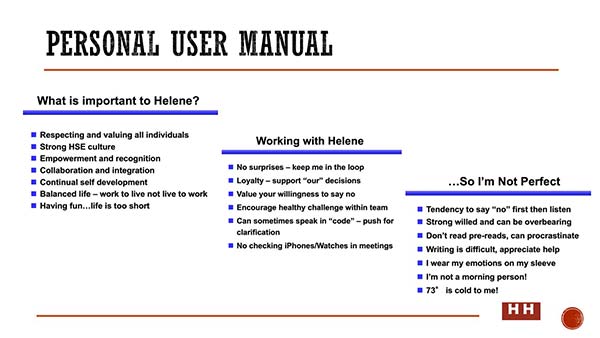Part 2 of 3 in RLG’s series: Behaviors of an Inclusive Leader
This article carries on from Part 1 - Behaviors of an Inclusive Leader, where we share the insights that guest speaker Helene Harding, retired VP at ConocoPhillips, brought to a standing-room-only session at RLG’s recent Best of the Best conference. In Part 1, we highlighted that inclusion and diversity starts with the leader, in their mindset and in their actions. Intuitively we all know that. The hard part is in the execution.
To start, Helene recommends looking into the powerful videos being produced under the tag #InclusionStartsWithI. Like our D&I journey at RLG International, leading companies are encouraging discussion around the importance of a positive, inclusive work environment. Originally produced to feature groups of Accenture employees, the theme and layout has been extended by other organizations. In a compelling way, these videos demonstrate that bias can appear in both expected and unexpected ways – and that each of us holds the power to make a difference.
So how do we start?
Brene Brown, professor, author and speaker, has spent her career studying courage, vulnerability, shame, and empathy and is the author of five #1 New York Times best sellers and popular TED Talks. She talks about the need to be empathetic and the importance of making a connection with people.
“To be able to feel with people, you have to connect within yourself.”
Brene Brown
Helene Harding shared her approach used during her lengthy career with ConocoPhillips to create her self-awareness. Through peers, employees, family and friends, she gathered formal and informal feedback on how she “showed up,” both as a leader and as one who includes and values those around her.
Harvard Implicit Test. This online resource founded in the 1990s on the back of social psychology research, suggests that the strength of a person's subconscious association between mental representations of objects (concepts) in memory can be tested to bring self-awareness. In short, by comparing word associations with images, the test works to highlight the unconscious biases held by the test taker.
Ultimately, Helene created a user manual for herself and shared that with her team and when onboarding new employees. Beyond sharing insights for working effectively with Helene, the act of sharing this personal insight opened a dialogue to help others feel safe in being their authentic self around her and in her organization.

“I used this with my team and for onboarding new people. I believe this opens better conversations with people and builds a comfort level where people can be their authentic selves.”
Helene Harding
Please join us next week when we will present parts 3 in this series Behaviors of an Inclusive Leader. We hope you find it as useful and interesting as we did. Interested in continuing the conversation? Join us on our LinkedIn company page and comment, share or like.
Previous Article: Part 1 - Behaviors of an Inclusive Leader
Next Article: Part 3 - Inclusion Is The Key To Benefiting From Diversity